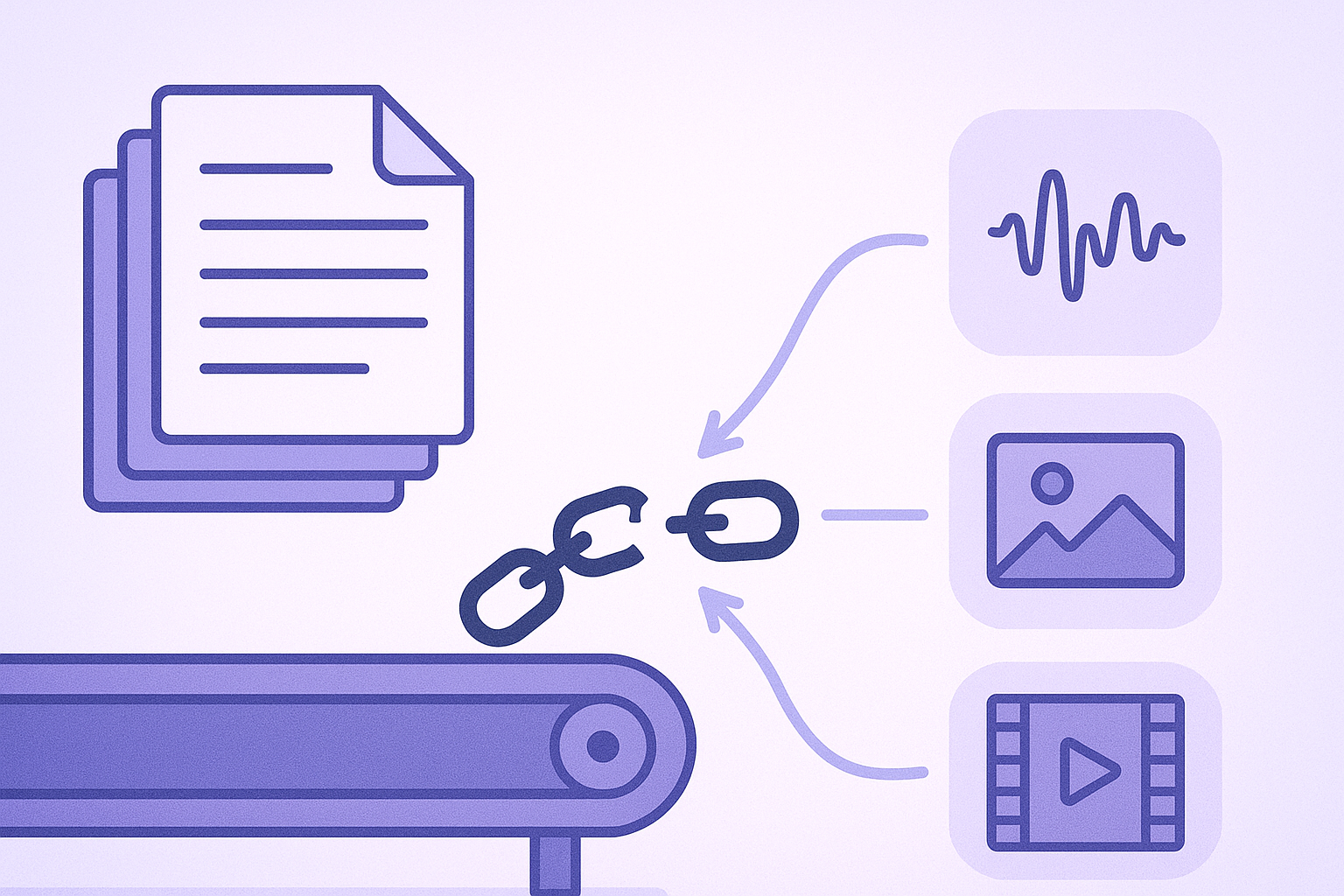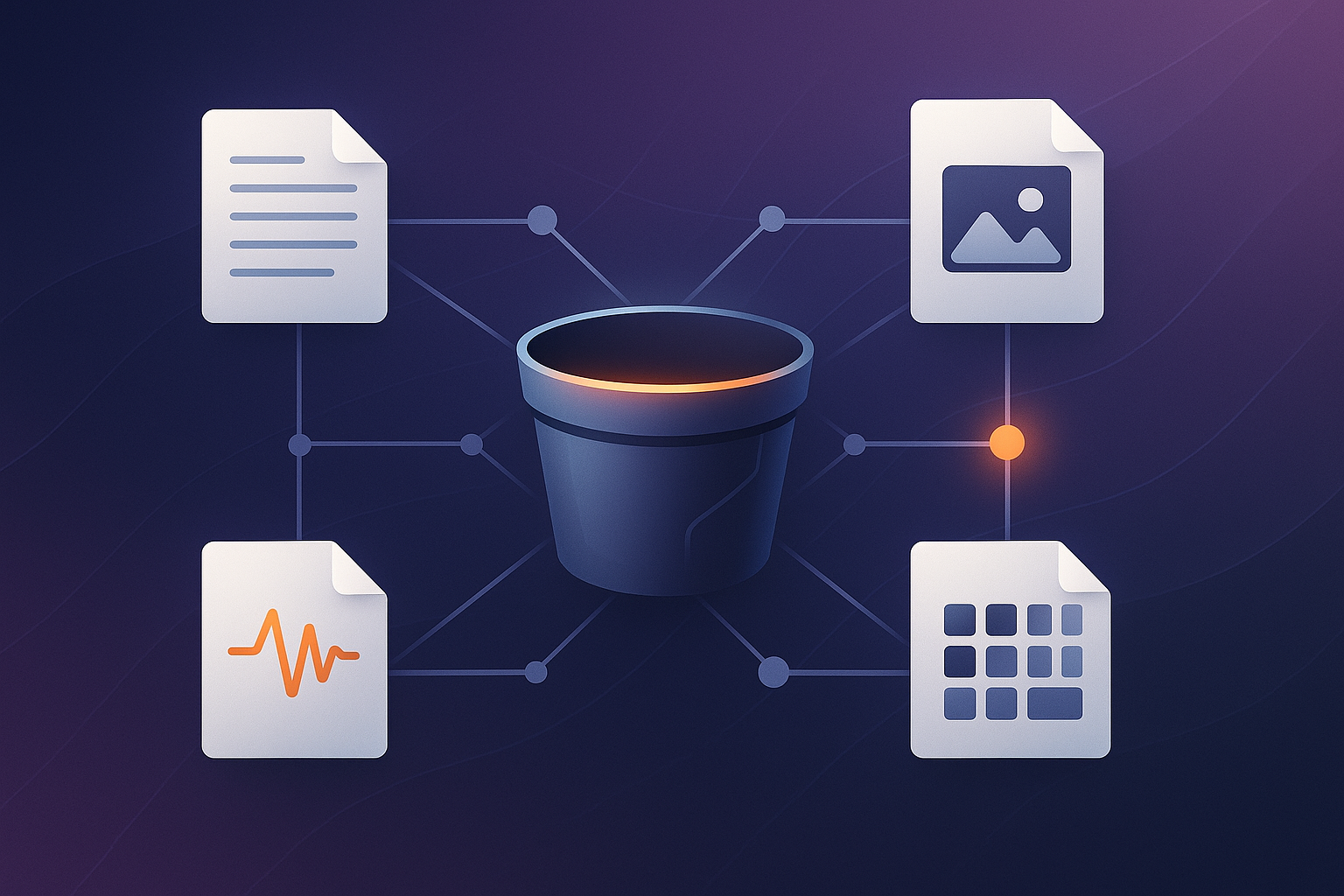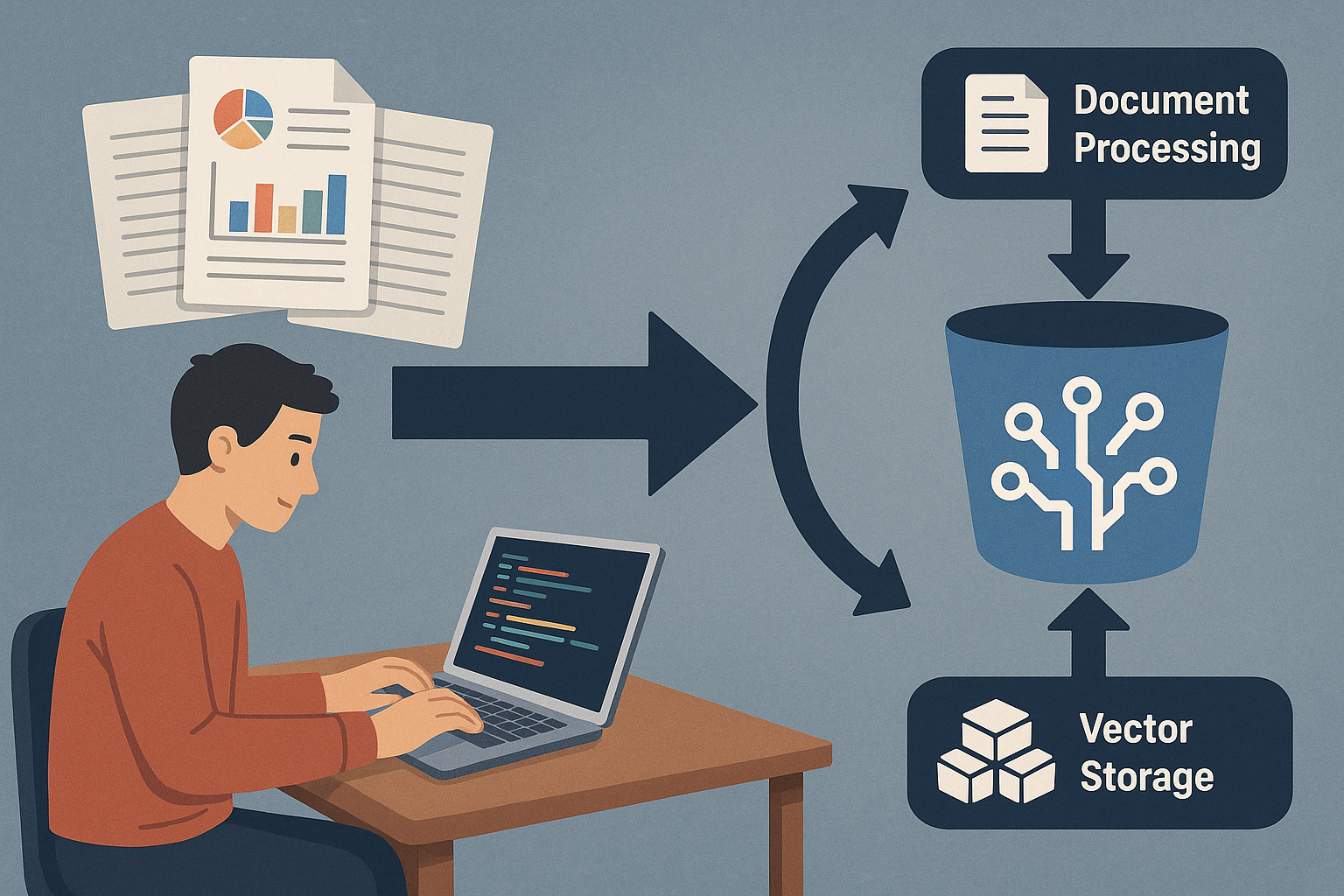:::caution[Deprecated Integration] The LangChain integration described in this post is no longer actively maintained. For current integration options, please visit our documentation. :::
When LangChain burst onto the scene in late-2022, it quickly became the framework of choice for AI developers diving into the world of large language models. Even today, it remains a good starting point for anyone experimenting with and learning AI development. Its vast number of integrations, YouTube How-To Videos, and vibrant community make it perfect for rapid prototyping, laptop demos, and even initial proof-of-concepts.

LangChain excels at getting developers from zero to working AI application in minutes. Whether you’re building your first chatbot, experimenting with document Q&A, or creating content generation tools with a locally installed LLM, LangChain provides the scaffolding that lets you focus on your application logic rather than the underlying complexity of LLM orchestration.
However, as many developers discover, there’s often a significant gap between a compelling demo and a robust application that can handle real-world documents at scale. The challenge isn’t with LangChain itself—it’s with the document storage and retrieval infrastructure that these applications depend on.
The most popular LangChain applications all share a common dependency: they need to process, store, and retrieve information from documents effectively.
Conversational AI & Chatbots powered by Retrieval-Augmented Generation (RAG) form the backbone of modern customer support and internal assistants. These systems need to quickly find relevant information from knowledge bases, product documentation, or historical conversations.
Document Analysis & Summarization applications process everything from legal contracts to research papers, extracting key insights and generating summaries. The quality of these applications directly depends on how well they can parse and understand document structure and content.
Question-Answering Systems that power FAQ automation and knowledge bases must efficiently search through vast collections of documents to provide accurate, contextual answers with proper source attribution.
Content Generation tools that produce research-backed writing and reports need access to reliable, well-organized source material to generate factually accurate and properly cited content.
Code Analysis & Documentation systems help developers understand codebases, generate documentation, and answer technical questions by processing code repositories and related documentation.
All these use cases share a common bottleneck: they require robust document ingestion, processing, and retrieval capabilities. While LangChain provides good abstractions for working with LLMs, the document handling often becomes the weakest link in the chain.

Current solutions frequently break down when faced with real-world document complexity. PDFs with complex layouts, audio files, complex images, and video present challenges that require manual intervention and custom preprocessing logic.
This manual preprocessing quickly becomes a bottleneck for rapid development. What starts as a quick prototype suddenly requires significant engineering effort to handle edge cases in document parsing, maintain vector embeddings, handle entity extraction, knowledge graph creation, and ensure consistent retrieval quality across different document types and versions of those documents.
SmartBuckets solves the intelligent document storage challenge with built-in AI capabilities designed specifically for modern AI applications. Rather than treating document storage as a separate concern, SmartBuckets integrates document processing, vector embeddings, knowledge graphs, and semantic search into a unified platform.

Key technical differentiators include automatic document processing and chunking that handles complex multi-format documents without manual intervention; we call it AI Decomposition. The system provides multi-modal support for text, images, audio, and structured data (with code and video coming soon), ensuring that your LangChain applications can work with real-world document collections that include charts, diagrams, and mixed content types.
Built-in vector embeddings and semantic search eliminate the need to manage separate vector stores or handle embedding generation and updates. The system automatically maintains embeddings as documents are added, updated, or removed, ensuring your retrieval stays consistent and performant.
Enterprise-grade security and access controls (at least on the SmartBucket side) mean that your LangChain prototypes can seamlessly scale to handle sensitive documents, automatic Personally Identifiable Information (PII) detection, and multi-tenant scenarios without requiring a complete architectural overhaul.
The architecture integrates naturally with LangChain’s ecosystem, providing native compatibility with existing LangChain patterns while abstracting away the complexity of document management.
LangChain developers appreciate the framework precisely because it enables rapid experimentation and intuitive development workflows. However, when moving beyond toy examples with small document sets, several pain points consistently emerge.
Manual document preprocessing slows down iteration cycles significantly. What should be a quick test of a new prompt or retrieval strategy becomes a multi-hour exercise in data preparation and cleanup.
Vector store management becomes increasingly complex with real document sets. Maintaining consistent embeddings, handling document updates, and ensuring optimal retrieval performance requires significant infrastructure investment that distracts from application development.
Inconsistent retrieval quality hurts demo reliability. A demo that works perfectly with carefully curated test documents often fails embarrassingly when presented with real-world document collections (that are constantly updated to new versions) containing edge cases and formatting variations.
Scaling beyond laptop-scale datasets requires significant architectural rework. The simple file-based approaches that work well for prototypes quickly become inadequate when dealing with hundreds or thousands of documents, audio, and/or video.
SmartBuckets plugs seamlessly into LangChain’s retriever ecosystem through native Python SDK integration. The integration provides custom LangChain retriever classes that interface directly with SmartBuckets’ document processing and search capabilities.
The architecture maintains LangChain’s familiar patterns while providing enterprise-grade document handling behind the scenes. Developers can use existing LangChain code with minimal modifications, simply swapping out document loaders and retrievers for SmartBuckets-powered alternatives.
API endpoints follow RESTful conventions and provide both synchronous and asynchronous interfaces for different use cases. Connection management is handled automatically, with built-in retry logic and error handling.
Document Loaders provide direct integration with SmartBuckets document APIs, automatically handling format detection, content extraction, and metadata preservation. These loaders can process individual documents or entire directory structures with mixed formats.
Retrievers offer custom retriever classes that support both semantic and hybrid search capabilities. The retrievers integrate with LangChain’s standard retriever interface while providing access to SmartBuckets’ advanced search features including filtered search, knowledge graphs, and multi-modal retrieval.
Basic setup requires minimal configuration:
# Install the integration
pip install lm-raindrop-integrations
#Here's how to use the SmartBucket retriever in your LangChain application
from lm_raindrop_integrations import LangchainSmartBucketRetriever
# Initialize the retriever
retriever = LangchainSmartBucketRetriever(
bucket_name="your-bucket-name", # Required parameter
api_key="your-api-key" # Alternatively, set RAINDROP_API_KEY env variable
)
# Search for documents
results = retriever.invoke("What is machine learning?")
# Process results
for doc in results:
print(f"Content: {doc.page_content}")
print(f"Score: {doc.metadata['score']}")
print(f"Source: {doc.metadata['source']}")
print("---")
// Install the integration
npm install @liquidmetal-ai/lm-raindrop-integrations
// Here's how to use the SmartBucket retriever in your LangChain application
import { LangchainSmartBucketRetriever } from '@liquidmetal-ai/lm-raindrop-integrations';
// Initialize the retriever
const retriever = new LangchainSmartBucketRetriever({
bucketName: "your-bucket-name", // Required parameter
apiKey: "your-api-key" // Alternatively, set RAINDROP_API_KEY env variable
});
// Search for documents
const results = await retriever.invoke("What is machine learning?");
// Process results
for (const doc of results) {
console.log(Content: ${doc.pageContent});
console.log(Score: ${doc.metadata.score});
console.log(Source: ${doc.metadata.source});
console.log("---");
}
Configuration options include search type selection (semantic, keyword, or hybrid), chunking strategy customization, and metadata filtering rules. The system provides sensible defaults that work well for most use cases.
For developers migrating from existing LangChain implementations, the integration provides compatibility modes that minimize code changes while gradually introducing SmartBuckets capabilities.

The integration dramatically reduces boilerplate code requirements. What previously required hundreds, if not thousands, of lines of document processing, embedding management, and vector store configuration now requires just a few lines of SmartBuckets configuration.
Document pipeline management becomes significantly simpler. Developers no longer need to coordinate between multiple services for document parsing, embedding generation, entity extraction, and vector storage. SmartBuckets handles the entire pipeline as a unified service.
Versioning of datasets along with the ability to simply delete a file and it’s indexed data is a must have for those that move behind a cute laptop demo. SmartBucket makes these must-have features automatic and simple for any Langchain user going forward.
Traditional LangChain chatbots often struggle with limited context and inconsistent responses when dealing with large knowledge bases. With SmartBuckets integration, these systems transform into state-of-the-art (SOTA) RAG-powered assistants with comprehensive document knowledge.
A customer support bot example can explain the power of this. Before SmartBuckets, the bot could only answer questions about topics explicitly covered in its training data or what might have been added to a basic RAG vector search. After connecting to SmartBuckets containing the complete product documentation enhanced with knowledge graphs, advance ranking and more across user manuals, FAQ database, images, audio, and more, the same bot provides more accurate answers with no additional development.
Additionally, the system can now automatically handle document updates, ensuring that the bot’s knowledge stays current as documentation evolves. Source attribution allows users to verify information and dive deeper into relevant documentation sections.
Document analysis applications benefit tremendously from SmartBuckets’ automatic multi-format processing capabilities. Previously, developers needed to create very complex processing pipelines for PDFs, audio, images, and other formats.
A fictious contract analysis system can demonstrate this transformation. The original system might require manual preprocessing to extract text from various contract formats, often losing important structural information like tables, lists, and document hierarchy. With SmartBuckets integration, the system automatically processes contracts in almost any format, preserving structure, entity relationships, data from tables, explanation of images, thus enabling more sophisticated analysis.
The system can now extract deep relationship and enable a level of retrieval previously left up to the user to create.
results = retriever.invoke("Find me all documents that talk about mortgage refinances in Michigan form 2025 where the title company was Acme Corp")
Planned features include expanded multi-modal capabilities with code and video. Let us know if you have a must-have file type.
Community feedback on our Discord is actively driving development priorities. The team regularly incorporates suggestions from developers as fast as we can, where it makes sense.
SmartBuckets transforms LangChain applications by eliminating the document handling bottleneck that often prevents prototypes from scaling to real-world applications. The integration maintains LangChain’s developer-friendly approach while providing enterprise-grade document processing capabilities.
For existing LangChain developers looking to level up their applications with robust document handling, SmartBuckets provides a seamless upgrade path that doesn’t require massive architectural changes.
Getting started is straightforward with comprehensive documentation, code examples, and community support available at docs.liquidmetal.ai. The integration is available immediately for all SmartBuckets users.
Want to get started? Sign up for your account today →
Want to learn more? Check out our detailed documentation, where you’ll find LangChain integration examples and automatic tooling for your SmartBuckets.
To get in contact with us or for more updates, join our Discord community.